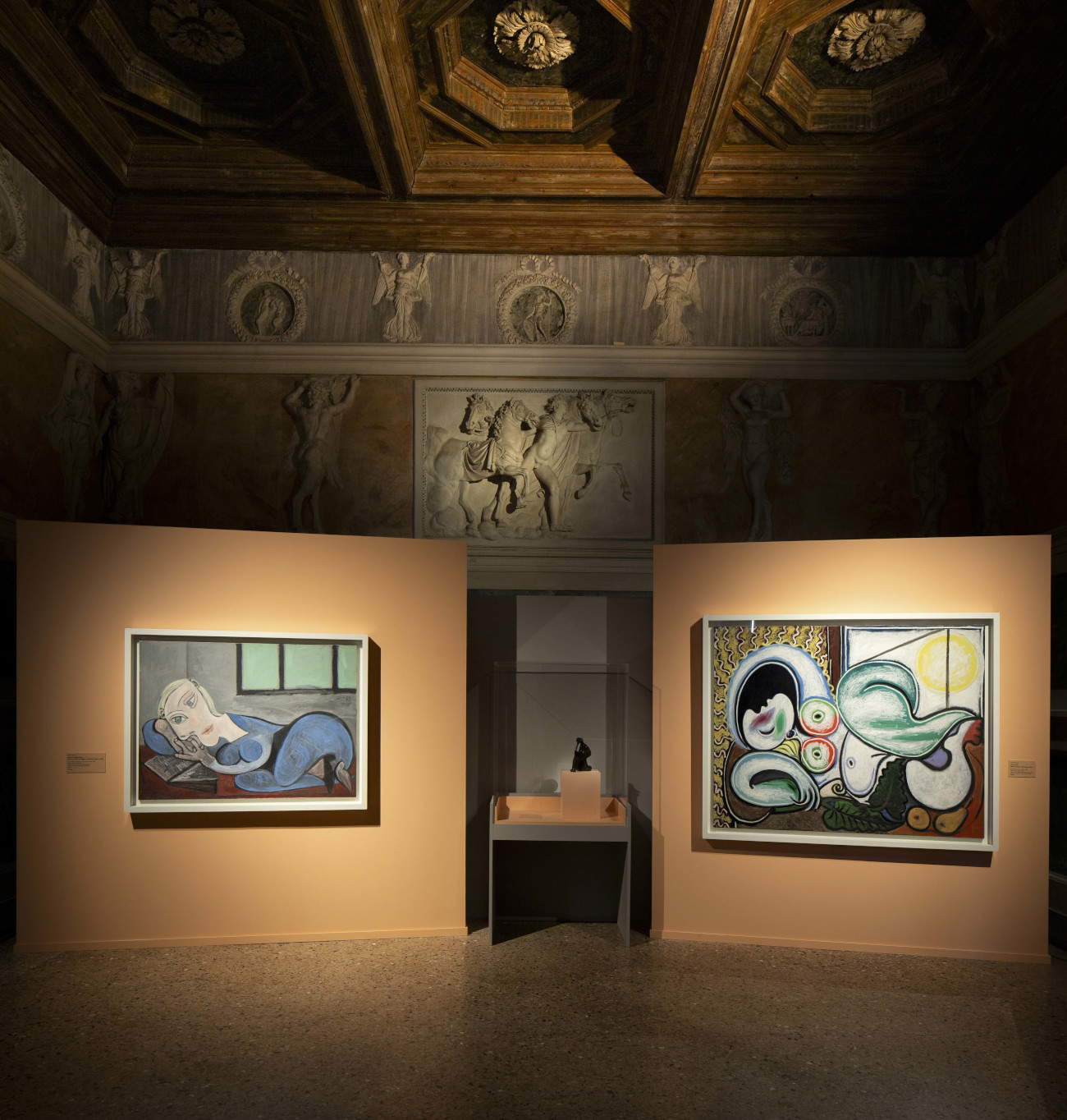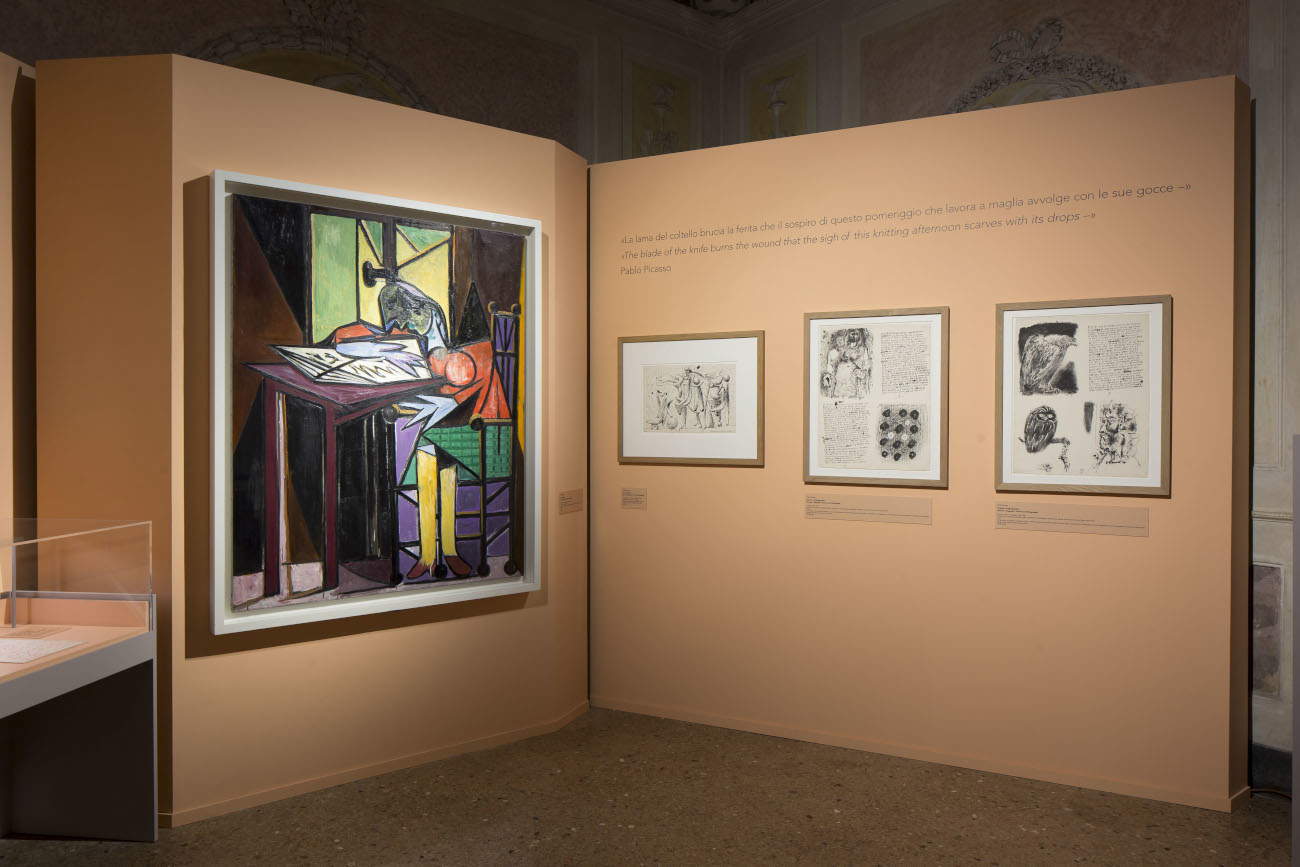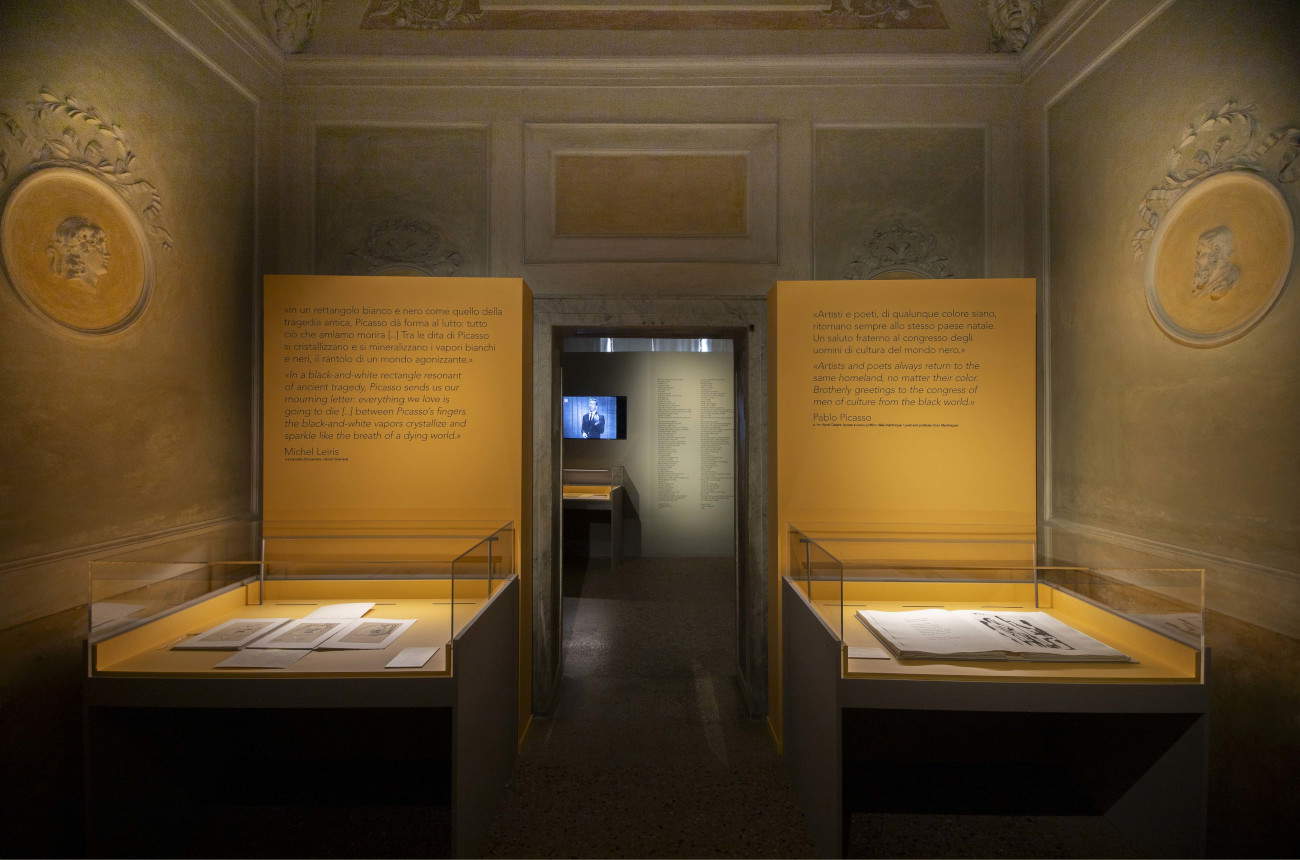Set up inside Palazzo Te in Mantua from September 5, 2024 to January 6, 2025, the exhibition Picasso at Palazzo Te. Poetry and Salvation dedicated to the master of the 20th century, Pablo Picasso (Malaga, 1881 - Mougins, 1973) is curated by Annie Cohen-Solal in collaboration with Johan Popelard. It is produced by Fondazione Palazzo Te with the contribution of Fondazione Banca Agricola Mantovana, the support of Amici di Palazzo Te and Musei Mantovani, with the media partnership of Gruppo Editoriale Athesis, the technical support of Aermec, and in synergy with Mantova città d’arte e di cultura. The exhibition is in collaboration with Musée national Picasso-Paris and with the artist’s family and is the main production of the 2024 cultural program dedicated to the theme of Metamorphosis, the relationship between Giulio Romano (Rome, 1492 or 1499 - Mantua, 1546) and Ovid ’s poem that inspired the construction of Palazzo Te from 1525 to 1535.
In 1930, four hundred years after the creation of the Camera dei Giganti in Mantua, Picasso created a series of engravings dedicated to Ovid’s Metamorphoses: this offers a direct dialogue with Giulio Romano and the Renaissance paintings of Palazzo Te. The exhibition presents about 50 works, including some paintings exhibited in Italy for the first time.
The exhibition opens with the Pablo, Julius and Ovid section in which a series of drawings that Picasso developed for Metamorphoses is presented in dialogue with an Etruscan vase never exhibited before dedicated to the theme of metamorphosis and the soul’s journey into the world of the dead, on loan from the Rovati Foundation in Milan. Here we observe the birth of Picasso’s mythological inventions such as the Fall of Phaeton, the love of Jupiter and Semele, the story of Cephalus and Procri, Hercules and Nessus, the death of Orpheus, Polyxena at Achilles’ tomb, Vetumno and Pomona. In the second section, Picasso Stranger in Paris... Greeted by Poets, a corpus of drawings, sculptures, objects and documents is presented, such as Guillaume Apollinaire’s precious Diary-Agenda, which recounts the relationship between the artist and a group of poets who, in early 20th-century Paris, constituted the city’s avant-garde core. These include Apollinaire, who encourages him in his conquest and knowledge of Paris; Gertrude Stein, an American expatriate in Paris, who writes her Cubist poems in dialogue with the portrait Picasso dedicates to her, with obvious mimetic effects. Instead, the poet Jean Cocteau who offers him the opportunity to sign a contract as costume and set designer in Sergei Diaghilev’s company of the Ballets Russes . In the third section, When Picasso Becomes a Poet: Salvation explores how poetry also became a true creative practice for the artist. He wrote in French, Catalan and Castilian, realizing with the multiple experiments of language what he had produced with painting and sculpture. During these years he applied himself to the representation of the mythical images produced by Ovid in the Metamorphoses, which we find in precious paintings such as Lying Woman Reading of 1939, It Is Snowing in the Sun of 1934 or the bronze Metamorphosis I of 1928. Poetry allows Picasso to establish a fruitful relationship with inspiration and the Ancient, in an interplay of mutual simultaneity between art and language. In the fourth section The Metamorphosis Experienced as a Strategy, through works visible for the first time in Italy thanks to a loan from the Picasso family, we explore how the theme of metamorphosis influences Picasso’s existential intimacy. This is evident in the room that studies Picasso’s confrontation with his alter ego Minotaur represented by a large tapestry on loan from the Picasso Museum in Antibes that dialogues with a marble statue from the Museo Nazionale Romano.
Emigrating to France in 1900, branded a foreigner by the police and the Academy of Fine Arts, an anarchist and avant-garde artist until 1944, Picasso was initially taken in by a small group of marginal poets. It is in poetry and the world of poets that he finds the means to overcome the obstacles associated with his status as a foreigner. “What sense can there be, today, in devoting oneself to poetry, a seemingly minor area in the overwhelming oeuvre of Pablo Picasso? How to explain the fact that, starting in 1935, poetry became another means of expression for this genius who, having arrived in France in 1900, did not speak a single word of French and, when he did, it was always in a mediocre way? The answer, the editor explains, ”must be sought in his fragility as a foreigner in France, in his unbridled creative energy, in his empathy for the most marginalized people in society, namely the poets, and above all in his magnificent political genius, which enabled him to masterfully overcome the countless obstacles of French society. Entering Paris through the back door, treated as a pariah, and excluded from the national collections for fifty years, Picasso never stopped weaving networks of friendships throughout the country, to choose, in 1955, to settle in the Province rather than the capital, preferring artisans to academics of Fine Arts, electing the Mediterranean as his homeland and freely building his global fame-a subversive response, in keeping with the history of Palazzo Te."
The exhibition is part of the collaboration agreement entered into by Fondazione Palazzo Te, Musei Civici with the City of Mantua, and Palazzo Reale with the City of Milan, to promote the two exhibitions dedicated to Pablo Picasso. In Milan, from September 20, 2024 to February 2, 2025, Palazzo Reale is planning Picasso the Stranger, an exhibition co-produced with Marsilio Arte. The exhibitions in Mantua and Milan, both curated by Annie Cohen-Solal, with a Marsilio Arte catalog, arise from a collaboration with the Musée national Picasso-Paris and bring out a radically unknown Picasso, resonating with our contemporary: the poet and the stranger. With the admission ticket for the first exhibition, visitors will be able to access the other at a reduced rate.
Images © Succession Picasso by SIAE 2024. Photo Gian Maria Pontiroli



 |
| Mantua, Palazzo Te dedicates exhibition to Picasso and his relationship with Ovid's Metamorphoses |
Warning: the translation into English of the original Italian article was created using automatic tools. We undertake to review all articles, but we do not guarantee the total absence of inaccuracies in the translation due to the program. You can find the original by clicking on the ITA button. If you find any mistake,please contact us.